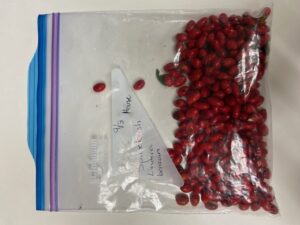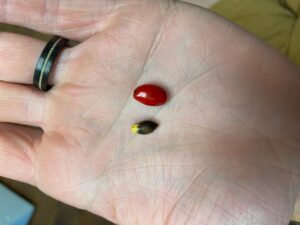Native Seed Saving
go.ncsu.edu/readext?955950
en Español / em Português
El inglés es el idioma de control de esta página. En la medida en que haya algún conflicto entre la traducción al inglés y la traducción, el inglés prevalece.
Al hacer clic en el enlace de traducción se activa un servicio de traducción gratuito para convertir la página al español. Al igual que con cualquier traducción por Internet, la conversión no es sensible al contexto y puede que no traduzca el texto en su significado original. NC State Extension no garantiza la exactitud del texto traducido. Por favor, tenga en cuenta que algunas aplicaciones y/o servicios pueden no funcionar como se espera cuando se traducen.
Português
Inglês é o idioma de controle desta página. Na medida que haja algum conflito entre o texto original em Inglês e a tradução, o Inglês prevalece.
Ao clicar no link de tradução, um serviço gratuito de tradução será ativado para converter a página para o Português. Como em qualquer tradução pela internet, a conversão não é sensivel ao contexto e pode não ocorrer a tradução para o significado orginal. O serviço de Extensão da Carolina do Norte (NC State Extension) não garante a exatidão do texto traduzido. Por favor, observe que algumas funções ou serviços podem não funcionar como esperado após a tradução.
English
English is the controlling language of this page. To the extent there is any conflict between the English text and the translation, English controls.
Clicking on the translation link activates a free translation service to convert the page to Spanish. As with any Internet translation, the conversion is not context-sensitive and may not translate the text to its original meaning. NC State Extension does not guarantee the accuracy of the translated text. Please note that some applications and/or services may not function as expected when translated.
Collapse ▲Saving seed can be an intimidating task for a beginning gardener. Many seeds have to be preserved in a way that allows them to stay vital all winter long. Most vegetable seeds are pretty simple to save with a few tips and tricks. Native seeds are saved with many of the same tricks however, they can add an extra layer of complexity. Many native plants are easy to grow from seed and help boost local ecosystems.
Lindera benzoin or the spice bush is native to the eastern United States and Canada. Growing as a 6-12-foot shrub with alternate leaf arrangement. The leaves and fruit have a spicy sent when crushed. The plant is dieocious meaning each plant is male or female. In order to save seed, you must have both in proximity to each other. Incidentally spicebush is very easy to grow from seed.
Each fall the female plants produce copious amounts of fragrant red drupes. Drupes look a lot like berries only they contain just one single seed. Spicebush is a favorite of many birds so, when saving seeds make sure to harvest once the drupes turn red. Leaving some on the plants for the birds to enjoy. They will have a scent like pepper and a fleshy red covering. Collect the seeds in a labeled plastic bag I recommend having the date, species, and location on the label. Once harvested you can begin the process of cleaning the seeds.
Cleaning spicebush seed is a very easy task. Remove the seed from the fleshy covering and place in a strainer or bowl. Compost the flesh or dry it and use it as an all-spice replacement. Rinse the seeds off in a bit of water and allow to dry off for a few days. These seeds don’t have to dry as long as typical vegetables. They are already dry and hardened at this point much like a pea.
At this point the seed has been fully processed and is ready to be stored. You have two options of storage at this point. Many native seeds like to have a cold stratification period. This is a period of time that would naturally be winter. You can place the seed in the freezer for a few months in an airtight jar. Then around March remove them and place on a damp towel in the fridge. You can also in fall sow the seeds in the location you want them. I would recommend sowing heavy to allow for mortality. In spring begin to scout for small seedlings in the areas you sowed seed.






